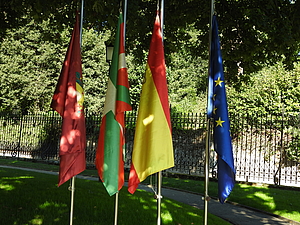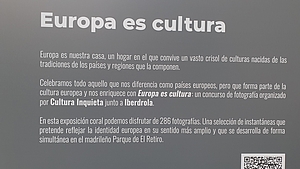Spain Costa Verde Express 2023
Costa Verde Express 2023
Main Holiday 2023
Travel through Northern Spain by Costa Verde Express train
21st September – 1st October 2023
INTRODUCTION
Our journey started smoothly. The taxi to Selwo Hills in Estepona arrived as it should, there were no queues for check in, the flight from Malaga to Santiago de Compostela was not delayed, the Eurostar Gran Hotel Santiago was actually booked and met our expectations – it had a central patio with a glass lift and every floor decorated with live flowers hanging down. Being suspicious, or perhaps prudent, I booked this hotel in Santiago for two nights just in case Vueling ("cheap flights, cheap flights") would cancel the only Malaga-Santiago evening flight on the eve of our departure by train.
LOST PASSPORTS (NEARLY)
We were supposed to get on the Costa Verde Express in Santiago at 10:00 a.m. on Saturday, and we definitely didn't want to miss it. So it seemed that nothing is in our way for a start of a relaxing holiday, because that's how I promoted the train to Georg, who resisted this idea for a long time. On Saturday morning, we woke up, packed and wanted to take out our passports and some of my rings in a little bag from the safe. We entered the password – the safe did not react. We entered it for the second time (of course, it is possible to make a mistake) - again nothing. When the third attempt failed, a bit of panic set in – we were due to leave for the train station in three quarters of an hour, which seemed enough time for the hotel to sort it out, but still, we were nervous. It turned out that there was only one young girl in the reception over the weekend, and she looked quite clueless. She called a colleague who instructed her how to open the safe with help of a certain device, but all her attempts failed. I had copies of the passports on my laptop, so I asked the girl to have them printed just to be sure, but I was still hoping. It turned out, in vain. A colleague who had the weekend off, and who might have been able to open the safe, would of course not waste her time off, and was not going to come. So we left the hotel without passports.
ALL´S WELL WHAT ENDS WELL
Luckily enough, the train management was reasonable, they already had all the information about us and we had paid, so they were satisfied with passport copies. However, this did not solve our problem, because after getting off the train we were supposed to stay in a hotel in Bilbao for 3 nights, and it was clear that they would certainly want passports there. I called Eurostar Hotel on Sunday and Monday, but the safe had not been opened yet. Meanwhile, of course, our train sped between various northern Spanish destinations. Finally, good news on Tuesday: the safe was opened! The girl from the reception asked for our address where she could send our stuff by post! I could not believe it! I immediately explained to the young lady that we were travelling by train moving from one place to another every day and anyway, she shouldn't dare to entrust my jewelry and our passports to the Spanish post. Then I gave hotel´s phone number to the train management which was a good move as they coordinated the actions. On Wednesday evening the courier brought the package to the station where the train was standing and we could breathe a sigh of relief.
OUR "LUXURIOUS" CABIN
Before I start talking about the positive experiences from this trip, I have to add that my assumption about a relaxing vacation turned out to be wrong also for a reason other than the stress with the passports. When we entered the compartment of the luxury train, we could not believe our eyes when we saw the insufficient furniture. There was one double bed built against the wall, so that when one person lay down on the edge, the other had to climb over, because there was no access from the other side. You can imagine me climbing over sleeping George at night when I needed to go to the bathroom, trying not to wake him up. Then there was a refrigerator (which we didn't need at all) and a closet so small that it was a miracle that we could fit our clothes in it at all. That was all. I have to admit that the bathroom and toilet were fine (shower even tropical rain style and excellent pressure, plus cabinets for cosmetics). But it was basically impossible to stay in that "room", because only one person could fit there, the other had to go to the bathroom, and sitting on the bed is not exactly comfortable either. In addition, the train was speeding and swaying from side to side, stopping by various bumps - I don't know if the reason was that most of the tracks in Spain are wide gauge (dictator Franco had it built in such a way so that enemies could not entry the country easily), or because the train was historic. Which meant stress with constant thinking over where we had accommodated our clothes and shoes and no real relaxing sleep at night.
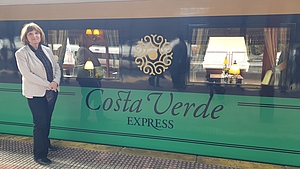
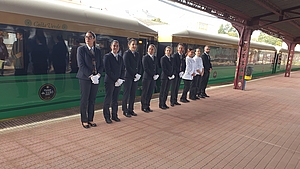
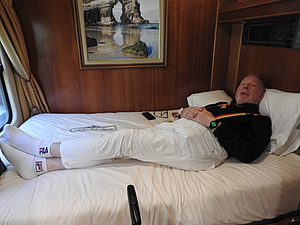
WHAT WAS FANTASTIC
Now it's time to mention the positive things. To summarize, everything else was excellent. The staff, their organizational skills, their willingness to help, everything worked. Dining room and club room in the train where we had breakfast and one more daily meal, lunch or dinner, were comfortable. At the train stops, we were always eating in special restaurants, most of them were so called paradores, which is a chain similar to Portuguese posadas. To be allowed to use the title parador, they have to have either historical background, or exclusive furnishings and decoration, or to be situated in an exceptional place with a view. Just looking at their menu really whetted our appetite. It consisted of sometimes four, sometimes five courses, and food was accompanied by excellent local wines, so that we felt as if we were permanently eating and drinking. The weather was fantastic all the time, cloudless sky, around 15 degrees in the morning, 25-26 degrees in the afternoon. Only last days in Bilbao were a little bit hotter.
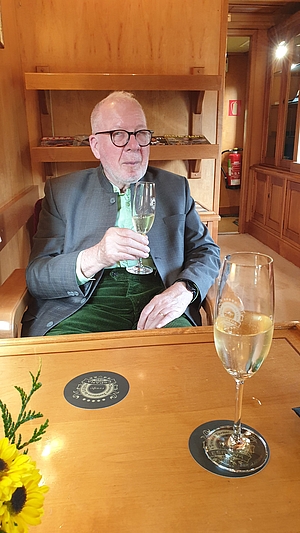
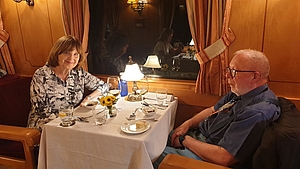
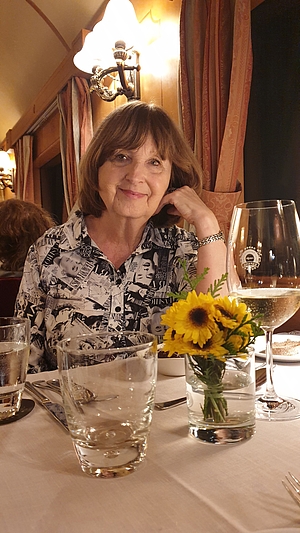
PARTICIPANTS
At the end of the stay, the guide organized a competition for Miss Costa Verde and Mr Costa Verde. The title of Miss was awarded to a Cuban lady living in America, who dressed all the time like a mannequin in a number of original ethnic robes accompanied by a hat, and she had always a perfect make-up. Among men, the absolute winner was Michelangelo from Antigua, but my George was the second! This brings me to the tour participants. George initially expressed concern that the participants of this tour might be nothing but snobs. But these worries were absolutely unfounded. It was surprising, how many people, mostly with some connection to Spain or Basque country, flew in from afar, to spend 6 days on this train. Some examples: a mother and daughter from Sydney (the daughter, a tax consultant, invited mother for a trip), a married couple from Tasmania, a couple from Santa Fé, Argentina (a medical doctor and a teacher), a couple from Wroclaw, Poland, a couple from Berlin, the aforementioned Cuban lady with her American husband, another American couple from Texas, husband a former military aviator (he participated in the Vietnam War!), who expressed their hope that Trump will win the election again. When I asked if they did not mind all the accusations and court cases against him, their answer was that it was necessary to wait for the evidence, and they did not believe that there was any. And finally, the winner of the competition Michelangelo and his wife Gisela, from the island of Antigua, originally from Venezuela (they have three passports, Venezuela, Antigua, Spain). He is a director of a project management and construction companies, so he was busy even on the train. We became quite friendly with them and promised to stay in touch. Generally, we had a great time with all participants.
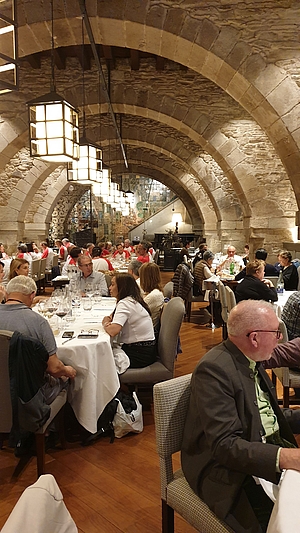
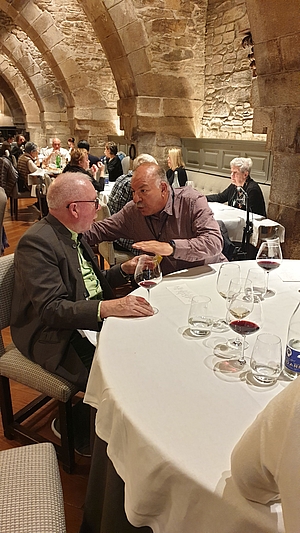
Further on I would like to describe what we have seen, experienced and what new knowledge we gained (it was a lot).
Spain consists of 17 autonomous communities, of which we visited four in the "green belt" in the north: Galicia, Asturias, Calabria and the Basque Country. My original idea that it would be mainly about the Basque Country was wrong.
Santiago de Compostela
Santiago is the capital of Galicia. Galicia is adjacent to Portugal and the people there speak a language that is more similar to Portuguese than Spanish, Galician (gallego). It is a Romance language, one of the four official languages in Spain (the others are Basque, Catalan and Spanish).
Since we arrived two days earlier, we had time to see Santiago properly. The entire old town with temples, monasteries and residential houses, built between the 12th and 19th centuries, is a UNESCO World Heritage Site. Cathedral of St. James is really fantastic (and we have seen a lot of cathedrals in our life). We were lucky because we got in without a queue and only gradually the cathedral started to fill up before the midday mass. The remains of the apostle Saint James the Elder, whose Spanish name is Santiago, are kept there. The cathedral is a destination for pilgrims from many directions along the so-called Camino de Santiago.
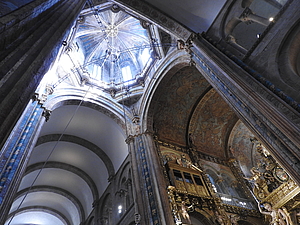
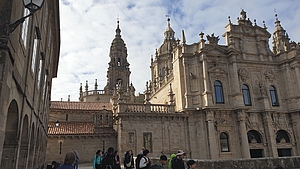
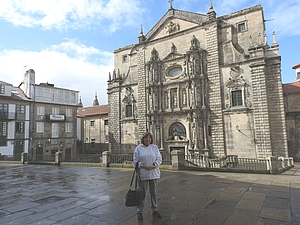
We were roaming around the old town, which has many narrow lanes, fountains, statues. I bought a ring with an agate stone, which is said to be a typical stone of Santiago, and another with an enamel shell, which in turn is a symbol of pilgrims. George used the services of a mini barbershop, where a single employee and owner in one person trimmed his beard perfectly.
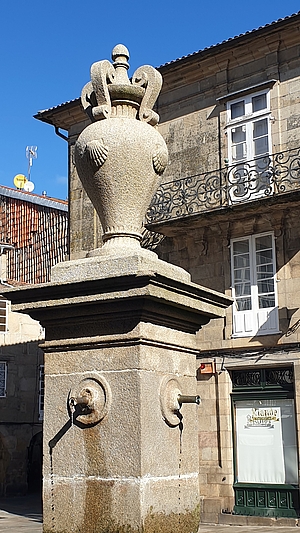
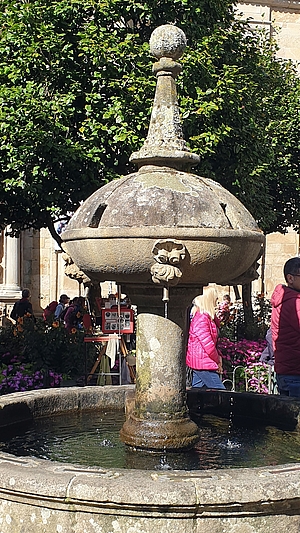
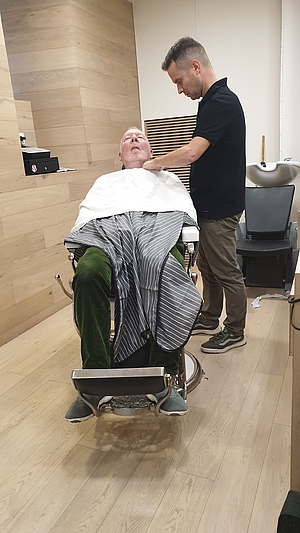
In the afternoon, we decided to visit the modern part of Santiago, a large cultural center with a museum and a library built 20 years ago. The buildings have been built in an avant-garde style, but inside, apart from a photo exhibition and a few artefacts of modern art, we found a little of interest, the huge spaces seemed to be quite underused.
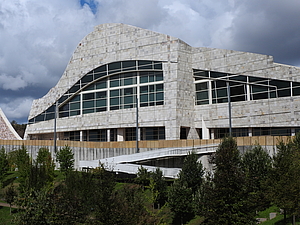
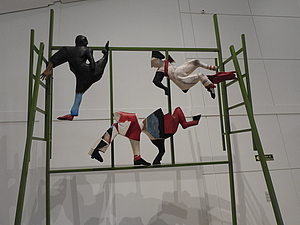
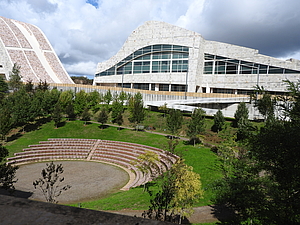
On the third day, our train journey began with an opulent five-course lunch including lobster and champagne at the historical Hotel Parador Nacional de los Reyes Católicos, next to the cathedral. A guided tour followed and the bus took us to the town of Ferrol, where we boarded the train.
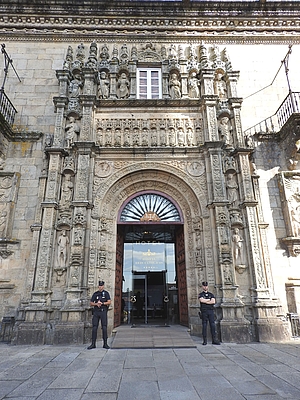
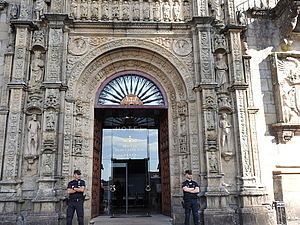
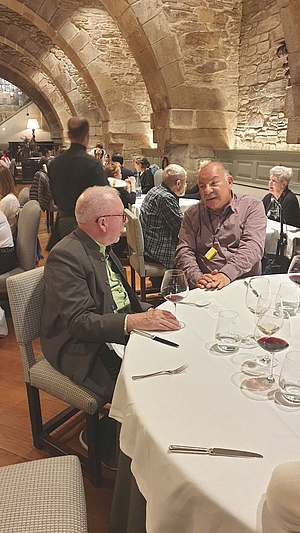
Viveiro
An evening walk through a historic town (Galicia)
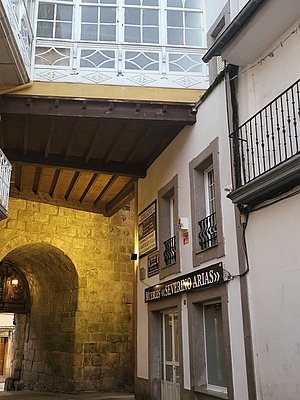
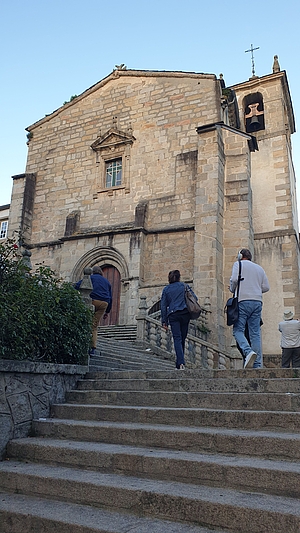
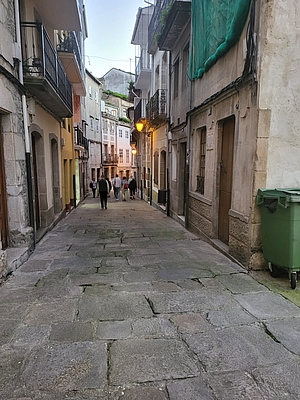
Ribadeo
A fortress San Damian, further an amazing rock formations on a beach that gets completely flooded once a day, reminiscent of the towers of churches "Las Catedrales".
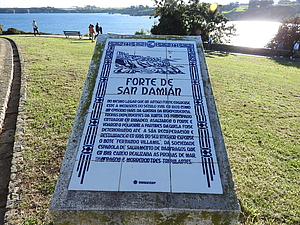
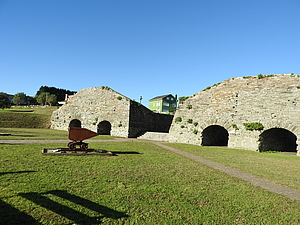
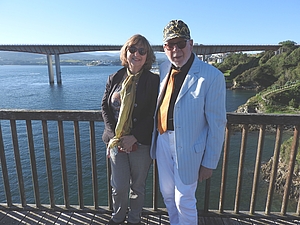
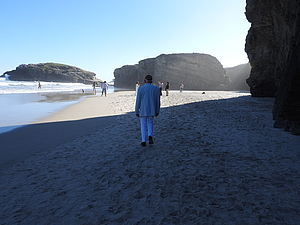
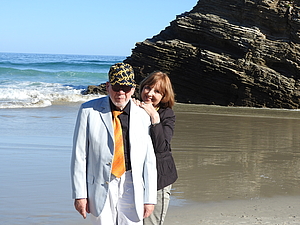
Luarca
The first town we visited in autonomous community Asturias. One fifth of the population speaks Asturian, but the official language is Spanish. So called “white town” of the Green Coast has one of the most beautifully situated cemeteries in Asturias, where Severo Ochoa, winner of the Nobel Prize in Medicine in 1959 and his wife are burried. A town of fishermen and sailors with a prominent lighthouse and a white church over the sea.
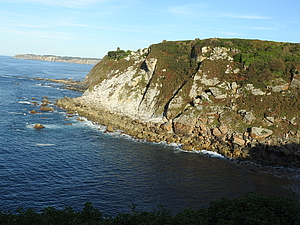
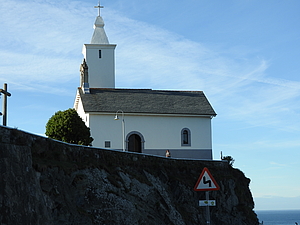
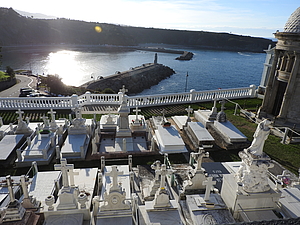
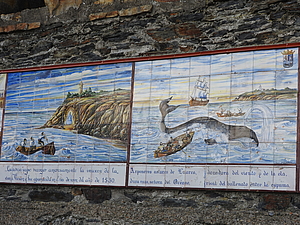
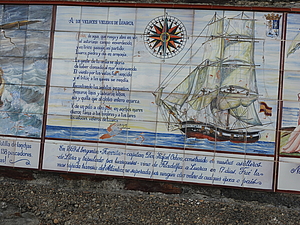
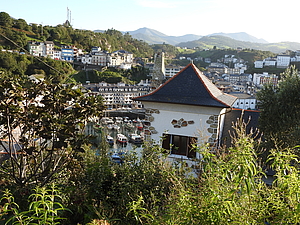
Oviedo
It is situated also in Asturias. Rich in architectural monuments from the early Middle Ages, a number of projects were already carried out by Alfonso II in the first half of the 9th century and his successor Rairo I.. A beautiful cathedral of St. Salvator, its foundations were laid already 781.
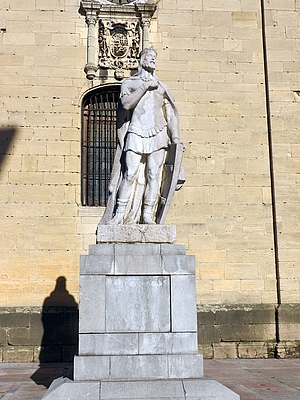
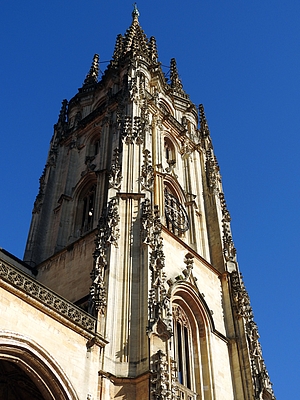
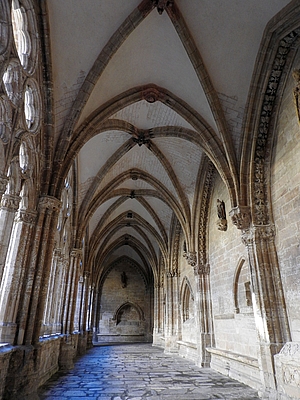
Gijon (in Asturian Xixon, pronounced chichón, or shishón)
7th biggest Spanish city. We visited Laboral Ciudad de la Cultura – Cultural Center of Asturias with university, port, many beaches, palm trees and mild maritime climate. The city is also known for producing many types of natural cider, see below the photo of the pyramide made from cider bottles.
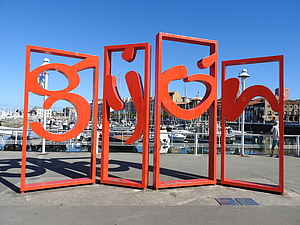
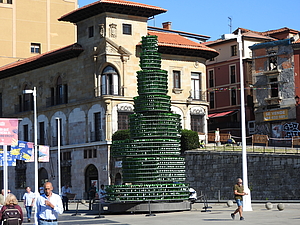
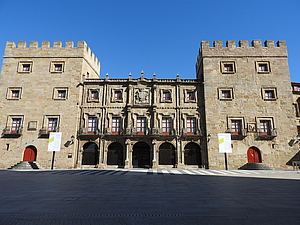
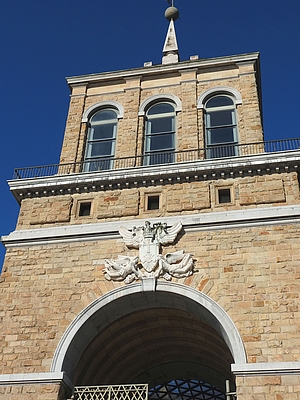
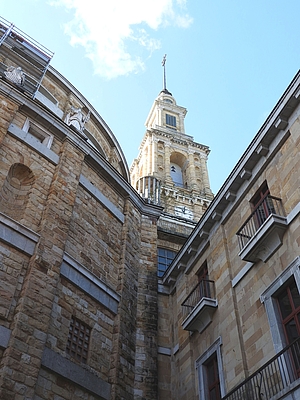
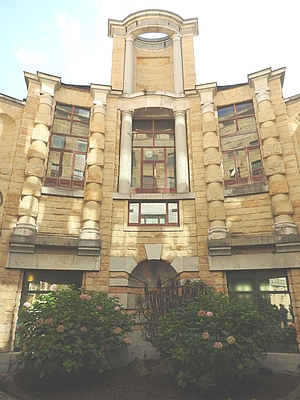
Cangas de Onís
In Cangas de Onís town, the 5-arched Roman Bridge spans the Sella River. Southeast, Picos de Europa National Park is home to limestone formations and the high-altitude Lakes of Covadonga.
Picos de Europa is a chain of mountains about 20 km long with the highest mountain Torre de Ceredo, 2650 m. Impressive views.
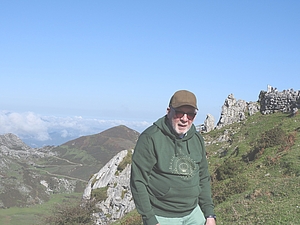
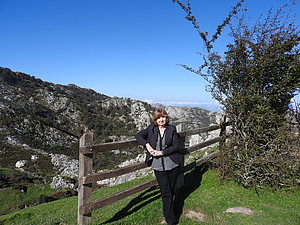
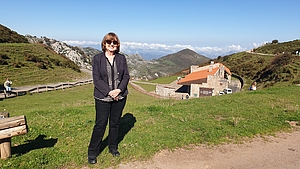
Cavadonga
A pilgrimage site (Cueva Santa). Our Lady of Cavadonga is a late 16th century wooden statue known as Santina. According to a legend, she prevented the Moors from conquering Spain by protecting Don Pelayo and the Christians at the Battle of Cavadonga. It has a similar importance to believers as our Lady of Lourdes in France or Our Lady of Fatima in Portugal.
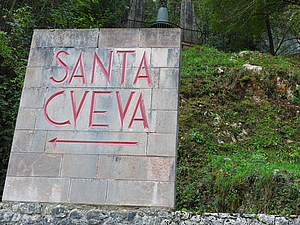
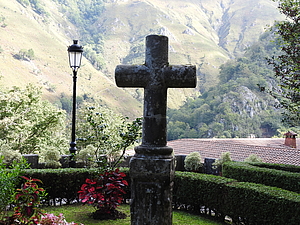
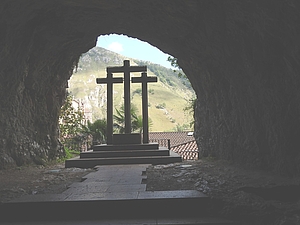
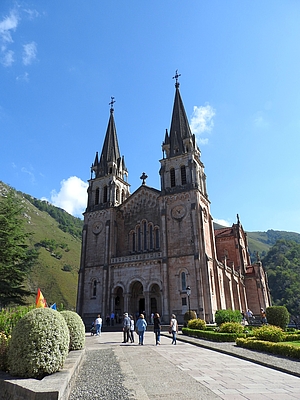
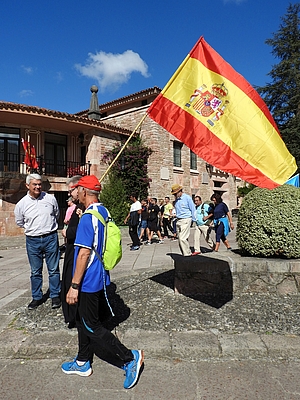
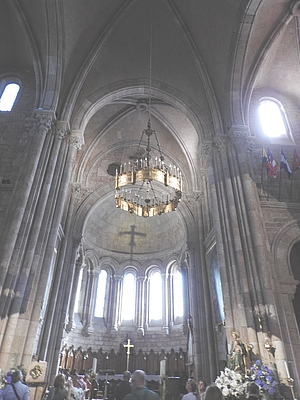
Llanes
Known for its golden sand beaches, marina and historical center.
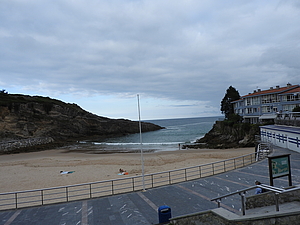
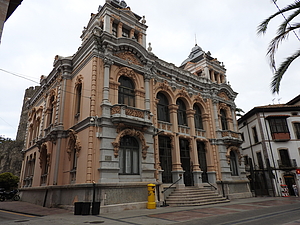
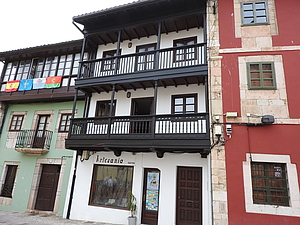
Prehistoric center Altamira
A cave in Cantabria in the town of Santillana del Mar, listed on the UNESCO list of cultural monuments. The rock paintings in Altamira are 18 500 years old and were discovered by a landowner and local archaeologist with his five-year-old daughter in 1879. The actual cave has been closed to the public, but Spanish architects and artists spent several years creating a perfect replica with all the elevations and exact replicas of Paleolithic cave paintings. The visit was accompanied by a film presenting the life of the people who lived and created art in Altamira, from paleolithic to prehistoric times.
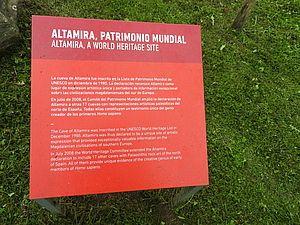
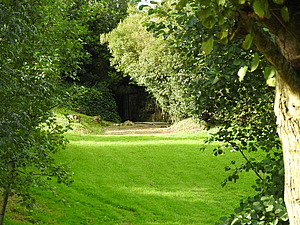
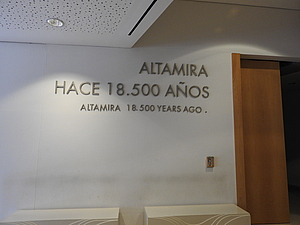
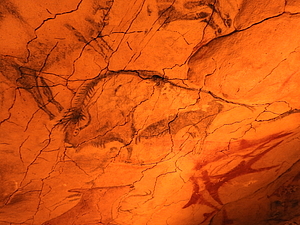
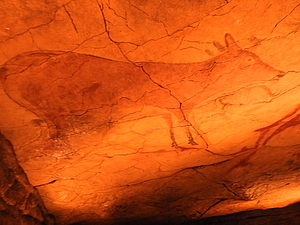
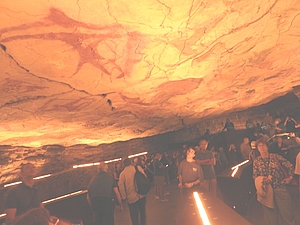
Santillana del Mar
An amazing picturesque medieval town in Cantabria. There is a hard-to-translate pun about this town for those who speak Spanish. Santillana del Mar is known as the city of three lies - because it is neither holy, nor ordinary, nor is it by the sea (ni es santa, ni es llana, ne está en la costa). Jean Paul Sartre, who had the honor of receiving Nobel Prize for literature but refused it, liked to stay here very often, and in his novel The Nausea expressed no doubt that "Santillana del Mar is the most beautiful city in the world". Cantabria does not have its own language, Spanish is spoken there.
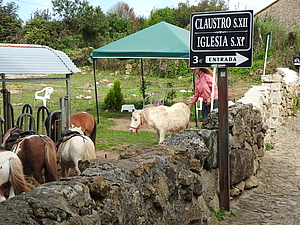
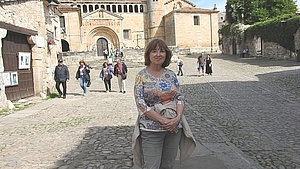
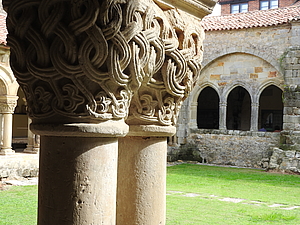
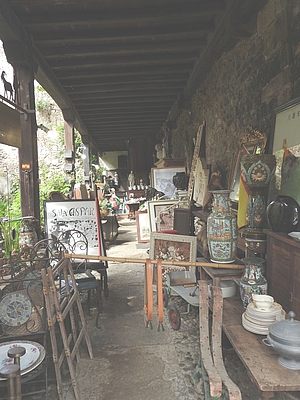
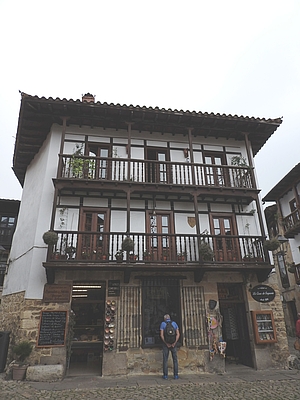
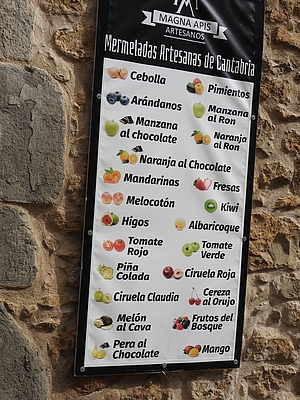
Santander
The last night on the train - we were taken to observe sunset and full moon on the beach.
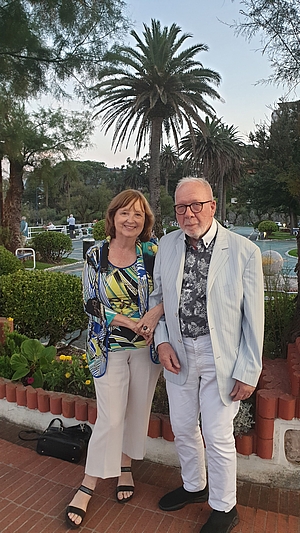
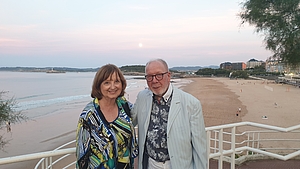
BASQUE STORY
The capital of the Basque Country is Bilbao which we have visited in a guided excursion but we also had a chance to get a feel about the city on our own, as we stayed 3 nights longer. I have to admit that before starting our journey, it was the Basque story I was most interested in, a story of the nation which differs from all European nations in culture, language (Euskara is not one of the Indo-European languages) and even DNA. Nevertheless, the Basques have been always denied the right to have their own state. The latest theory from 2015 about the origin of the Basques is based on a thorough DNA analysis and suggests that they are descendants of Neolithic Iberian farmers who mixed with local hunters before becoming genetically isolated from the rest of Europe for millennia. It was also proven that Basques have 50% blood type 0, and the type AB is very rare among them. After the discovery of the RH factor, it was found that an above average percentage of Basques were RH negative, which, if the mother was not given the antidote (possible only in modern times), led to high infant mortality.
The Basques have been known as excellent sailors and fishermen already in the first half of the 16th century (they were not deterred by their small boats or the size of the whales). In the 12th century they probably invented the first rudder. There were 200 sailors in Magellan’s round-the-world expedition, 35 of them Basques.
Basques are very enterprising, and when the country was hit by wars, economic crisis and political persecution, they did not hesitate to emigrate (in recent times especially during the civil war in the 1930s). Thus the Basque diaspora spread throughout the world. In Argentina, people of Basque origin make up 10% of the population and many names, including names of several presidents, are Basque. The Basques immigrated to Chile as traders and, thanks to hard work and clever entrepreneurship, presently they achieved the highest levels on the social ladder presently. They are also connected by numerous marriages with the Chilean elite of Castilian origin. The percentage of Chileans with Basque ancestry is estimated to be between 10-27%. Basques also live in large numbers in Venezuela, Uruguay, Colombia, the United States, Canada, Mexico and the Philippines, of course in Australia.
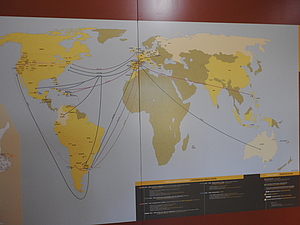
The guide explained to us that many of the original emigrants became rich abroad and returned home. These returnees are called “Indianos” (he couldn’t explain why). He also pointed out that many houses in historical centers of towns have coats of arms of prominent families. If the house is owned by old settlers, he coat of arms is small, just as a house mark. If the house belongs to one of the “Indianos”, who are considered wealthy, the coat of arms is certainly disproportionately large. Traditional families didn’t consider it necessary to brag about their wealth, nouveau riches did (probably nothing much has changed, it’s the same everywhere).
If we read about the history of the people living on the territory of today’s Basque Country in Spain and France, we can see that for a long time the Basques managed to navigate between the conflicts of much stronger powers and maintain their own autonomy and laws, even at the cost of apparent subjugation, financial indulgences, eventual military aid. This is how it happened under the Romans, during the period of Visigoth dominance after the collapse of the Roman Empire (5th century), during the reign of Charlemagne (he restored Frankish rule over the Pyrenees in 778 and began to promote the baptism of the pagan Basques), after the occupation of the area by the Vikings in 844, and after the arrival of the Moors, who ruled the north only to a limited extent. The Basques always wanted to keep their rights and their way of life, and they just wanted everyone to leave them alone. In the same way they did not want to interfere in the power struggle that began to take place on Spanish territory between the Castilians and the Aragonese in 12th and later in the 14th century.
In 1199, a clever King Sancho VI of Navarre (the territory of Navarre was inhabited by the Basques at that time) made a diplomatic trip to King Alfonso VII of Castile and for a promise of loyalty obtained the ratification of Navarre rights. These were the laws, called fueros, that guaranteed Basques a large degree of self-government and enabled creation of their own laws. All Castilian and later Spanish monarchs swore to uphold them under the oak tree in Guernica - until the 19th century.
Then the French Revolution 1789 and the Napoleonic Wars changed it all. The revolution brought progressive slogans, elimination of the monarchy, equality, freedom, fraternity. It seems a paradox, but it was not good news for the Basques, as it also brought a strong push for centralization by republican governments and suddenly there was no place for an individualistic conservative Basque society that wanted to govern itself by their own laws. Both the Northern Basque Country (north of the Pyrenees in the territory of France) and the Southern Basque Country (in the territory of Spain) were in constant conflict and fighting with the centralist governments. The first Spanish constitution promulgated in Cádiz in 1812 completely ignored Basque reality and history and spoke of a single Spanish nation under the Spanish crown. When, despite all efforts to reach an agreement, their demands were rejected, the Basques refused to swear to the new constitution.
In the 19th century a conflict between two contenders for the right to the Spanish throne was the cause of three Carlist wars (Guerras Carlistas). The Carlists, followers of Don Carlos and his descendants, fought several times during the years 1833-78 under the slogan “God, Country, and King” to preserve Spain’s conservative political tradition (legitimism and Catholicism) against liberalism and later republicanism. When the reinstated King Ferdinand VII died in 1833, his fourth wife Marie Cristina became Queen Regent on behalf of her minor daughter Isabel II. This resulted in the fragmentation of the country into two factions known as Carlists and Cristinos. The Queen Regent and her government supported the Cristinos, the Carlists were supporters of Don Carlos, pretender to the throne and brother of Ferdinand VII, who denied the Pragmatic Sanction of 1830, which permitted a woman a succession to the throne.
The conservative Basques bet on the wrong card and supported the Carlists, who ultimately lost in this largest civil war of the time. For the Basques in the territory of Spain, this marked the end of their status of independence, which had been associated with loyalty to the Castilian crown for centuries. The loss of the fueros was followed by the Basque Economic Treaty (1878) and a period of shaky peace with occasional popular uprisings. It was also then when Basque nationalism was born.
I was not aware that until the end of the 19th century the Basques were recognized as a nation. This is also how the encyclopedia from 1850 defines them: “The Basques have always been a nation, their hallmarks being independence, isolation and courage. They have always spoken their ancient language and have constituted a confederation of small republics, related by their common ancestry and language.“
In World War 1, Spain remained neutral, but many Basques were conscripted on the French side (although many preferred to emigrate or cross the border into Spain). Over 6,000 people lost their lives in the war, which is shocking because this was 3% of the population of the “Northern Basque Country”.
In the years 1936-39, a civil war raged in Spain between left-leaning Republicans and Nationalists, led by a military junta headed by General Francisco Franco. Unfortunately, the Basques were on both sides in this war. Biscay and Gipuzkoa sided with the Republicans, but many in Navarre supported General Franco. The Republicans were supported by the Soviet Union, Mexico and a number of volunteers from various European countries, the Nationalists were supported by Hitler’s Germany and Mussolini’s Italy. Both sides committed crimes against the civilian population, but Franco’s units to a much greater extent. The biggest crime of this war was the German and Italian bombing (with the approval of Franco) of the small Basque town Guernica, which was basically wiped out from the face of the earth in one night (regardless of the civilian population, similar to Hiroshima, Dresden, Coventry...).
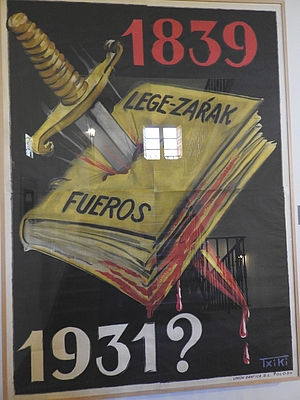
Picasso was commissioned by the Republican government to create a painting for the 1937 World Exhibition in Paris. He called it Guernica making the whole world aware of this crime. Tens of thousands of Basques barely survived the civil war and decided for exile.When Franco won the war, he passed harsh laws against minorities, including the Basques, with the aim of eradicating their culture and language. Speaking Euskara (Basque language) in public became a crime for which the culprit could find himself in prison. Tens of thousands of Basques, including those who had fled to France from Spain, joined the resistance and fought alongside the Allies. Even General de Gaulle praised the bravery of the Guernica battalion: “France will never forget the sacrifices made by the Basques for the liberation of our country.”
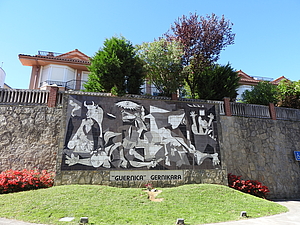
The Basques hoped that in recognition of their courage they would be able to create an independent state after the war, or at least gain extensive autonomy. But the Allies forgot about them. As Spain under Franco did not officially enter the war, although it supported Hitler in everything, the Allies did not occupy Spain and did not remove one of the oldest and most brutal dictators in Europe. The Cold War began and Franco allowed the Americans to establish 4 military bases in Spain in 1952. In doing so, he redeemed himself and was neither punished nor deposed from the post of president until his death in 1975. Also, after his death, there was no condemnation of the crimes of his government, no satisfaction was given to the victims of torture or to the survivors.
The Basques felt betrayed again and decided to continue their struggle for independence. ETA was founded in 1959, resorting to its first violent acts of terrorism in 1968. Franco responded by using the brutal Civil Guards, who murdered without trial those deemed dangerous to the government. After the death of Franco, the Spanish Basques (unlike the Basques in France) achieved autonomy enshrined in the constitution in 1979. Nowadays each of the Basque province has its own constitution, which is decided by a two-thirds majority, its own parliament, a council with a president and advisers elected by the parliament, and state courts. They can decide on taxes and collect them, but they must contribute to the state budget for defense, foreign affairs, maintenance of airports and public institutions. This status is guaranteed to the provinces of Gipuzkoa, Álava and Biscay. Euskara, the Basque language, is one of the official languages.
However, autonomy was not a sufficient solution for ETA and other radical groups, they wanted independence, a separate state, if possible in the union of the Spanish and French Basques, and decided to continue violent operations. The government reacted to the planting of bombs (most of which ETA informed in advance), and kidnapping of state employees (policemen, soldiers,mayors, but also teachers) by establishment of GAL death squads, which operated in the years 1983-87, and continued, like Franco, to murder inconvenient persons on commission by paid mercenaries. Estimates of casualties vary, but around 460 people were extrajudicially murdered. This period is known in Spanish history as the “dirty war” (la guerra sucia). Recently, the CIA released documents that the GAL operated with the approval of then Prime Minister Felipe González.
The fighting continued, with short interludes of cease-fires, often broken by both sides, until 2011. In that year, ETA decided to declare a permanent and general cease-fire that could be monitored by the international community. In 2018, the newspaper El Diario printed a statement by ETA that it had “completely dissolved all its structures and ended the political initiative.”
Basque nationalism and everything related to it must be seen in the historical context of almost two millennia. Before I immersed myself in the history of the Basque Country (I read a number of historical books and novels set in the Basque Country), Basque nationalism represented for me only the terrorist actions of ETA, for which I had nothing but condemnation. But as in many cases, things aren’t just black or white – and there is more than one culprit in this case, too.
Bilbao
We spent 4 nights in Bilbao. The main attraction of the city is Guggenheim Museum, because of its amazing architecture and interesting exhibitions. On the ground floor and the 1st floor we could admire paintings, sculptures and installations by the Japanese artist Yayoi Kusama, the second floor was dedicated to sculptures by Picasso and the third to various modern artists from the Guggenheim collections.
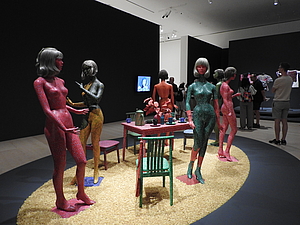
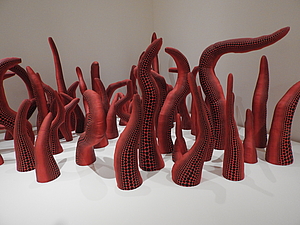
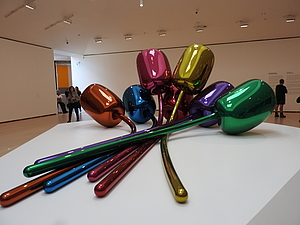
It is interesting to follow all historical connections which led to the creation of this unique museum. In the second half of the 19th century, the industrialization of Bilbao was based on the ore mining and the production of iron and steel. As everywhere else in Europe, this production was no longer competitive in the 1960s and 1970s. Mines, steel mills and smelters got bankrupt everywhere else, but they still held on in Spain, as Franco oriented the production and consumption of iron and steel only to the domestic market as part of his theory of the country's self-sufficiency. In addition, when a smelter or steel mill had a deficit, Franco subsidized it from the state budget.
However, after Franco's death in 1975, and especially after Spain's entry into the European Union in 1986, such a situation could no longer continue and Bilbao, oriented on heavy industry, struggled, which caused enormous economic difficulties, unemployment and impoverishment of the population, unrest, strikes and further violent actions.
The city management did not want to accept the situation and looked for solutions. In 1991, after preparing a project for a new airport and a metro system, the Basque government met with representatives of the Guggenheim Museum and agreed to build in Bilbao a museum of modern arts. They signed a 75-year contract in which the government pledged to pay $100 million for the construction of the museum, $50 million for the acquisition fund, a one-time fee of $20 million to the Guggenheim Foundation, and an annual investment of $12 million to support the museum's budget. The Guggenheim Foundation assumed responsibility for the management of the museum, confirmed the loan of the art collections and the accompanying program. Although this contract does not seem to be at first sight very advantageous for Bilbao, and the project was surrounded by a number of scandals, this strategy in the end worked. The city stopped being talked about only in connection with ETA - the unique museum prevailed. A group of 52 respected experts around Vanity Fair, who were to decide in 2005 on the most important projects of the second half of the 20th century, decided by majority that it was the Guggenheim Museum.
Designed by Frank Gehry, the same architect who designed Prague's Dancing House, it opened in 1997. Before the world was hit by the Covid pandemic, Bilbao experienced the greatest economic growth in its history between 2000 and 2018, fueled by a shift away from heavy industry towards service economy. It benefited, among other things, from flourishing tourism and culture, which were stimulated precisely by the construction of the Guggenheim Museum.
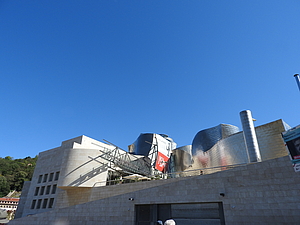
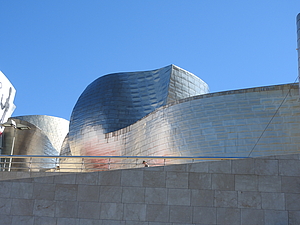
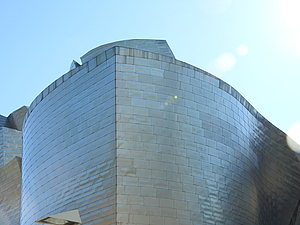
The next step to improvement of the situation of the population was supposed to be enabling quality education for all children. The guide in Bilbao explained to us what is the system of schools in the city. On one hand, there are Spanish schools that have the Basque language as a compulsory subject for 3 years. Then there are Basque schools, where Spanish is one of the compulsory subjects otherwise everything is taught in euskara. Both can be either public or private. In general, Basque schools have a better standard. Children of emigrants do not get to them (euskara is too difficult, and many of them speak Spanish), so parents who are afraid of emigration wave, enroll their children in Basque schools. And further there are parents who do not want their children to have anything to do with emigrants, but at the same time do not want to be associated with Basque nationalism. They have a wide choice of international schools (of course private).
We had a last lunch together with the participants of our train tour at the outskirts of Bilbao in a heritage protected typical Basque house in the middle of the nature. It was a nice conclusion of our stay together.
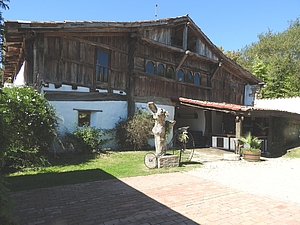
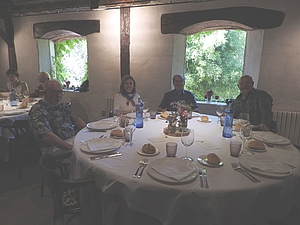
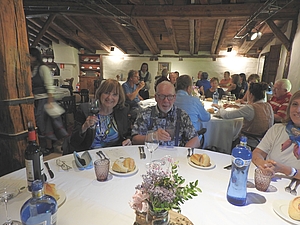
The center of life in Bilbao is so called Casco Viejo (the old town). We experienced it, already on our own, on a Friday evening, when all the streets were packed to the brim and residents of all ages and skin colors had an aperitif and an appetizer first, because to our surprise, the restaurants where you can eat do not open until 8:00 p.m. (the diversity of nationalities and races is considerable in Bilbao, unlike in the previous cities where we saw that the local population predominates). In the evening before eight o´clock, you can only get drinks and pintxos (pronounced pien-chos), small appetizers that are the Basque version of tapas. It took us some time during our stay in Bilbao to find out that we will not get lunch as per menu before 1:00 p.m. either. But luckily, the pintxos that you choose at the bar and take to the table yourself, mostly outside, are tasty and substantial enough. Especially after the feast on the train, we really didn't need to eat more and we lived the rest of our days in Bilbao on pintxos. George couldn't resist and bought a classic Basque beret from a shop that only specializes in Basque headwear, so he's well equipped for the winter along with the hoodie he bought in Santiago.
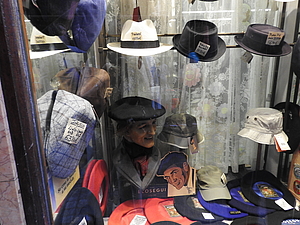
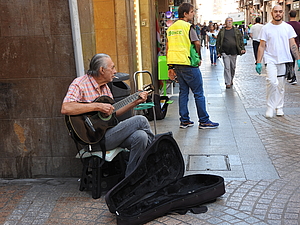

In the end we got a little bit lost in the streets of the old town, it was already dark, and when we finally found the way out of the crowds and caught a taxi, he told us that he didn't know how to get to our hotel Silken Indautxu (pronounced Indauchu, it's the name of the whole district, it doesn't have any meaning) because two demonstrations (“manifestaciones”) were announced from 20.00, one of them for better working conditions and Basque rights, the other one had something to do with the press, but I didn't understand it properly. From this reason a number of streets was closed. We were convincing the taxi driver that he had to go around these demonstrations somehow, and he said he would try, but he could not guarantee if he would not come across one of those closed streets and would have to go back. Well, he went around it and was not stopped, which meant that we could sleep in our bed.
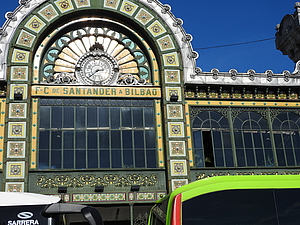
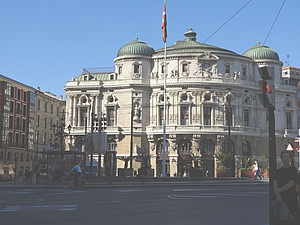
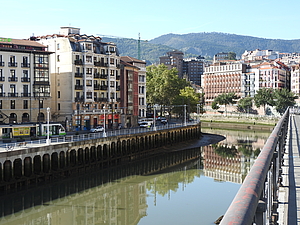
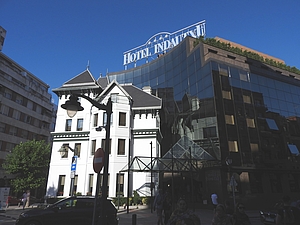
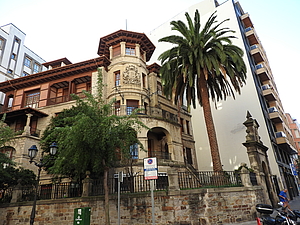
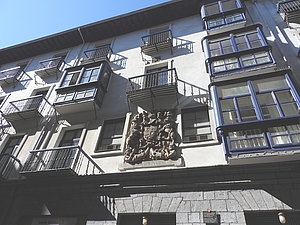
Guernica
We didn't know how to get to Guernica in any other way so that we decided to take a taxi. It was important for me to visit the museum, which focuses on Basque history, way of life, including sports (pelota), food (fruits, sweets), customs, culture and also emigration (an exhibition showing Basque contribution to development of Australia sponsored by Australian Embassy).
To visit the "junta" building, i.e. the Basque parliament, we would need to have an appointment, and it was full on the relevant day, but the good custodian let us individually see at least the most important room where the representatives of the Basques meet for their regular sessions - quite impressive. Guernica is also one of the towns where pilgrims are passing on their way to Santiago (part of Camino).
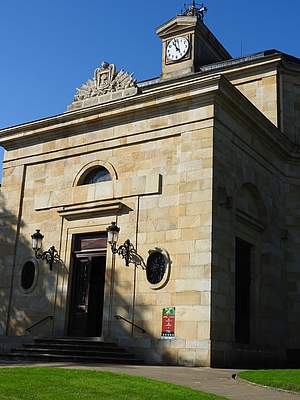
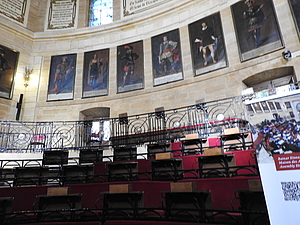
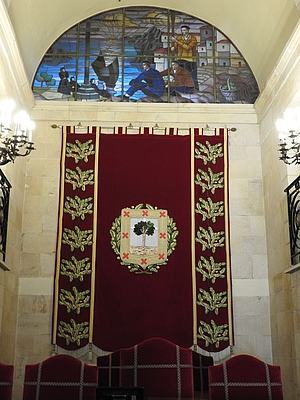
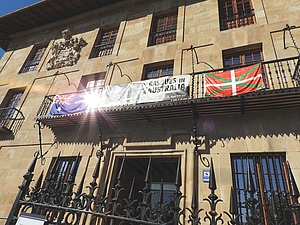
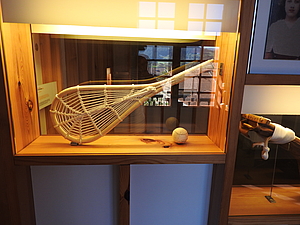
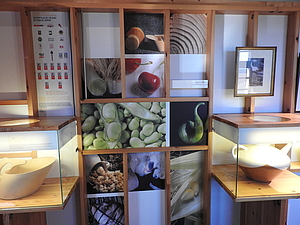
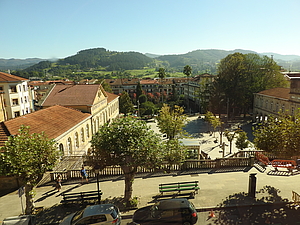
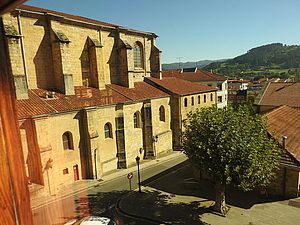
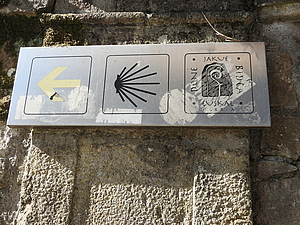
An oak tree which had grown next to the Parliament for centuries, symbolized the traditional freedoms of the people of Biscay, and by extension of all Basques. For centuries, rulers had to swear under the tree that they would respect Basque liberties (fueros). Also nowadays the lehendakari, the president of the Basque government, is sworn in there. The trunk of the old tree is preserved and protected, but a new oak tree was planted in 2015 for future generations.
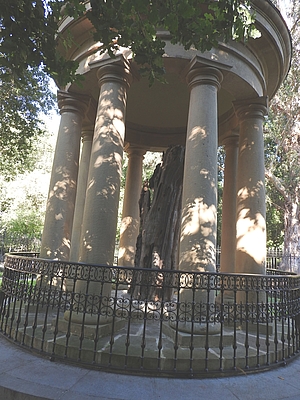
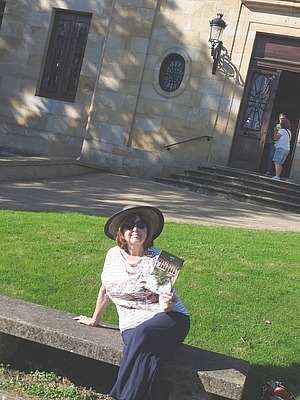
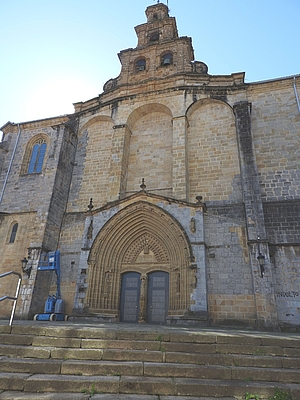
Another important cult place is a copy of the Guernica painting by Pablo Picasso (original in Madrid), the history of which I have mentioned above.
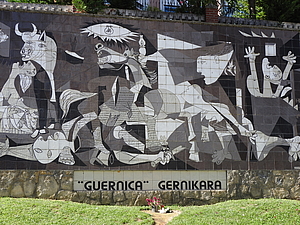
After a light lunch, we had to settle only for pintxos again, because it wasn't one o´clock yet, we decided to try the local transport and we returned for 2.50 Euros per person to Bilbao by train (the taxi cost was 70 EUR). The station guard was very helpful and taught us how to buy the tickets. We have also realized how much progress Spain has made since joining the European Union. A perfect system of highways, bridges, tunnels, new trains, new buses, repaired houses... I remembered that during my visit of Spain in 1980 there was no asphalt road even from Madrid to Toledo.
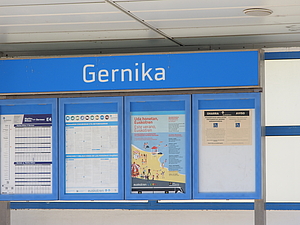
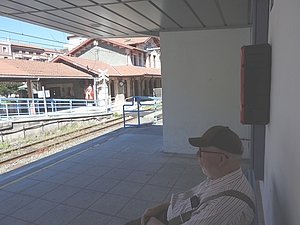
To summarize:
Fulfilled visions:
- Getting acquainted with the "Green Coast", a whole new area that we knew little about, including Galician and Basque culture
- Cosmopolitan pleasant company of interesting people on the train
- Excellent cuisine and wine
- Helpful, capable and nice staff
An unfulfilled vision:
- A relaxing holiday, when we will mainly be on the train, sometimes we will go on an excursion, and we will spend most of the time in a luxury compartment and observe the countryside.
And a last remark at the end:
If it is possible to come to any conclusion after such a short visit, it looks like that Basques nowadays feel as a part of Europe. A flag of European Union can be seen frequently. In one of the parks in Bilbao we could see a big exhibition called EUROPE IS CULTURE which presented 286 photographs of European cities (a few of them also from Prague) with relevant comments.
